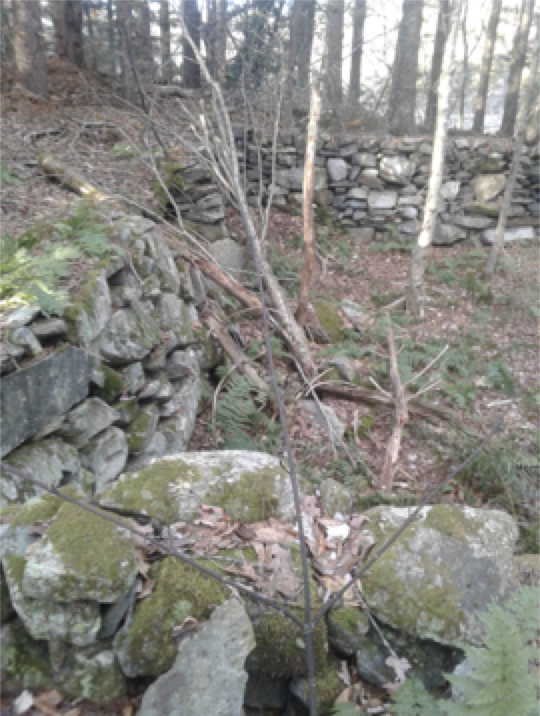Stumph and Bradley's Sawmill
If you’ve ever walked down the Navin Trail in October Mountain State Forest, you’ll notice a stone dam to your right at the first brook crossing. This is a story about that sawmill dam, and a husband and wife who owned it. Cobb Codding and his son Ephraim, bought this land in 1826 from a man named Haywood. They built a smaller earthen dam on the brook, which powered a sawmill just downstream of the trail crossing. In 1844, a year before he died, Codding sold the land and the sawmill to Phillip Stumpf, who was born in Bavaria in 1818. His partner was Peter Shaddell (Schatelle), who was born in France. Stumpf was married to Shaddell’s daughter, Magdalena. They enlarged the mill-pond by building the stone dam still seen today. They also erected a house on the property within view of the mill-pond, along with a barn. Both foundations are still visible.


The lumber was brought off the mountain by a now overgrown road that paralleled the Stumpf Brook down to the County Road, which turns into Washington Mountain Road in Lee. The Stumpfs lived in the home on the pond with their 11 children and Magdalena’s parents. Peter Shaddell is listed in the 1855 census, but must have passed away shortly after that. In 1859, Shaddell’s interest in the sawmill was sold to Alonzo Bradley of Lee.
The sawmill must have been prosperous for both men, as it had a reputation for supplying quality lumber. In September of 1862, Phillip Stumpf voluntarily enlisted into the Union army, with the 159th Infantry Regiment, New York State Volunteers. He was 44 years old. He enlisted at New Lebanon NY, and his regiment was sent to Louisiana, attached to the Department of the Gulf. He appears to have fought in the Siege of Port Hudson, LA, but is listed as dying of disease in June of 1863. He left his wife Magdalena and 7 children under the age of 18 at home.
Magdalena continued to run the mill with her husband's business partner Bradley, while raising the 7 children; Phillip 16, Magdalena 14, Frederick 12, Peter 10, Mary 9, Francis 7, and Julius 5. To say she was a strong woman would be an understatement!
By 1871, Magdalena could no longer pay her creditors for the vast land holdings her husband had acquired before his death, and she was forced to sell the land and the sawmill at public auction. Thomas Flynn won the bidding war for $755. Flynn seems to have continued running the sawmill until 1898, when he sold the land to William C. Whitney. The stone dam is still intact today, and the Stumpf’s cellar hole is right next to the dam and pond. They must have had a gorgeous view looking out over the water! Next to the house cellar is the foundation of a barn that may have been used for lumber storage. The mill itself is about 100 feet downstream from the trail crossing. All that is visible are some of the stones supports. The remains of the sluice that brought water to the mill can be seen just past the bridge crossing the trail. Magdalena Stumpf moved to Lee, and died there in 1892. She was 77 years old. She and Phillip are buried in Saint Mary’s Cemetery in Lee. Ten of Magdalena and Phillip Stumpf’s children grew to adulthood. One of them, also named Magdalena, married a man named Thomas Hayden. He was a well-known foreman at the Smith Paper Company in Lee. Their son William was a foreman at the Schweitzer paper mill. Many of Phillip and Magdalena Stumpf’s descendants still live in Lee. I’m sure they’re very proud of their ancestor who died a hero in the service of his country, and his wife who maintained a business while raising 7 young children.

